The automotive world is witnessing an electrifying shift, and two of the most talked-about models are the Hyundai IONIQ 6 and the Tesla Model Y. Each presents a unique blend of innovation, design, and performance that caters to the evolving demands of eco-conscious consumers. This comparison delves into their technical aspects and innovations to help potential buyers make an informed decision.
Hyundai IONIQ 6 vs Tesla Model Y – Performance, range & efficiency compared
Everyday use, family trips or long-distance drives – here’s where the differences show.
Discover whether Hyundai IONIQ 6 or Tesla Model Y fits your lifestyle better.
Design and Dimensions
The Hyundai IONIQ 6 showcases a sleek hatchback design that is both aerodynamic and visually striking. Measuring 4855 mm in length, 1880 mm in width, and 1495 mm in height, it offers a compact yet spacious atmosphere. The IONIQ 6’s trunk capacity stands at 401 liters, ensuring practicality alongside aesthetics.
In contrast, the Tesla Model Y takes on the SUV form factor with dimensions of 4751 mm in length, 1921 mm in width, and 1624 mm in height. It boasts impressive trunk space with 854 liters, accommodating a growing family’s needs while offering the versatility of additional seating for up to seven passengers.
Performance and Powertrain
When it comes to performance, both vehicles deliver a robust driving experience. The IONIQ 6 offers multiple power configurations, with outputs ranging from 151 hp to 325 hp, enabling it to accelerate from 0-100 km/h in as little as 5.1 seconds. Its available battery capacities include 53 kWh and 77.4 kWh, providing a range of up to an impressive 614 km on a single charge.
The Tesla Model Y, meanwhile, pushes boundaries in power delivery, generating between 299 hp and an astounding 534 hp in its higher configurations. The Model Y can reach 0-100 km/h in just 3.7 seconds, showcasing its performance prowess. It features a range of battery options up to 79 kWh, with the electric range hitting up to 600 km, making it a formidable contender.
Efficiency and Charging
Efficiency is a hallmark of both models, although they employ slightly different consumption characteristics. The IONIQ 6 achieves a consumption rate of approximately 13.9 kWh/100km, making it one of the most efficient electric vehicles on the market. In terms of CO2 emissions, it boasts a 0 g/km rating, aligning with eco-friendly standards.
On the other hand, the Tesla Model Y's consumption ranges from 14.9 to 17.3 kWh/100km, depending on the configuration. Like the IONIQ 6, it also adheres to zero-emission standards, marking it as a leader in sustainable mobility.
Interior Features and Technology
Both models emphasize modern technology and comfort. The IONIQ 6 comes equipped with a host of innovative features, including a high-tech infotainment system with a large touchscreen interface, spacious seating for five, and premium materials that elevate the driving experience.
The Tesla Model Y stands out with its minimalist interior design that integrates a gigantic central touchscreen controlling almost all vehicle functions. This design philosophy not only enhances the aesthetics but also provides a user-friendly interface for drivers and passengers. The availability of a 7-seat configuration in the Model Y enhances its versatility and family appeal.
Price and Value
Pricing for the Hyundai IONIQ 6 starts at €43,900 and can go up to €64,200, depending on the configuration. Given its range, efficiency, and tech features, it presents an appealing value for those seeking a cutting-edge electric hatchback.
The Tesla Model Y starts at €44,990 and can reach as high as €59,990. While it does come at a higher price point, the performance, spaciousness, and innovative technology may justify the investment for many buyers.
Conclusion
In the battle of the Hyundai IONIQ 6 versus Tesla Model Y, both electric vehicles offer compelling arguments. The IONIQ 6 shines with its efficiency, sleek design, and affordability, while the Model Y impresses with its performance, versatility, and cutting-edge technology. Ultimately, the decision may boil down to individual preferences regarding design, performance, and typical usage scenarios. Each model represents a significant step forward in the automotive industry, heralding a new era of electric mobility.
Here’s where it gets real: The technical differences in detail
Costs and Efficiency:
Price and efficiency are often the first things buyers look at. Here it becomes clear which model has the long-term edge – whether at the pump, the plug, or in purchase price.
Hyundai IONIQ 6 has a hardly perceptible advantage in terms of price – it starts at 37600 £, while the Tesla Model Y costs 38600 £. That’s a price difference of around 934 £.
When it comes to electricity consumption, both models perform equally – each averaging 13.90 kWh per 100 km.
As for range, the Tesla Model Y performs hardly perceptible better – achieving up to 622 km, about 8 km more than the Hyundai IONIQ 6.
Engine and Performance:
Under the bonnet, it becomes clear which model is tuned for sportiness and which one takes the lead when you hit the accelerator.
When it comes to engine power, the Hyundai IONIQ 6 has a hardly perceptible edge – offering 650 HP compared to 627 HP. That’s roughly 23 HP more horsepower.
In acceleration from 0 to 100 km/h, the Hyundai IONIQ 6 is hardly perceptible quicker – completing the sprint in 3.20 s, while the Tesla Model Y takes 3.50 s. That’s about 0.30 s faster.
In terms of top speed, the Hyundai IONIQ 6 performs minimal better – reaching 257 km/h, while the Tesla Model Y tops out at 250 km/h. The difference is around 7 km/h.
There’s also a difference in torque: Hyundai IONIQ 6 pulls noticeable stronger with 770 Nm compared to 493 Nm. That’s about 277 Nm difference.
Space and Everyday Use:
Whether family car or daily driver – which one offers more room, flexibility and comfort?
Both vehicles offer seating for 5 people.
In curb weight, Hyundai IONIQ 6 is slight lighter – 1850 kg compared to 1976 kg. The difference is around 126 kg.
In terms of boot space, the Tesla Model Y offers decisively more room – 822 L compared to 401 L. That’s a difference of about 421 L.
When it comes to payload, Tesla Model Y slight takes the win – 472 kg compared to 430 kg. That’s a difference of about 42 kg.
Who wins the race?
The Hyundai IONIQ 6 proves to be edges out slightly and therefore becomes our DriveDuel Champion!
Hyundai IONIQ 6 is the better all-rounder in this comparison.
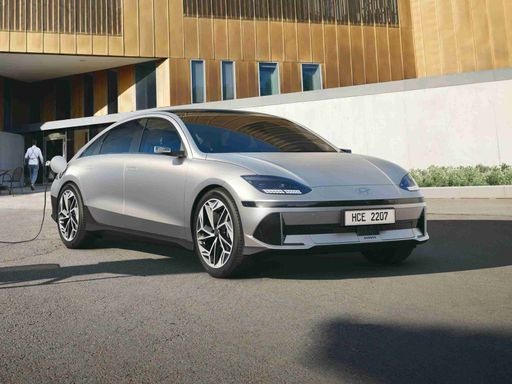
Hyundai IONIQ 6
Hyundai IONIQ 6
The Hyundai IONIQ 6 merges futuristic design with eco-friendly technology, offering a glimpse into the future of electric mobility. Its sleek silhouette and aerodynamic profile are sure to capture attention on the road, while the interior provides a seamless blend of comfort and cutting-edge digital features. With a focus on efficiency and sustainability, this model represents a significant step forward in the evolution of electric vehicles.
details @ hyundai.news
@ hyundai.news
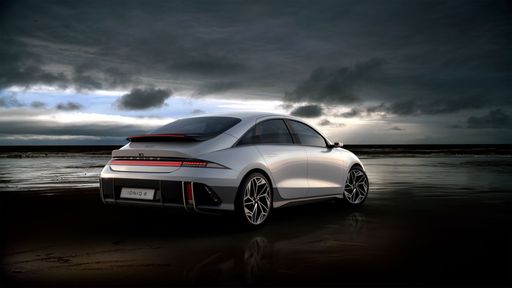 @ hyundai.news
@ hyundai.news
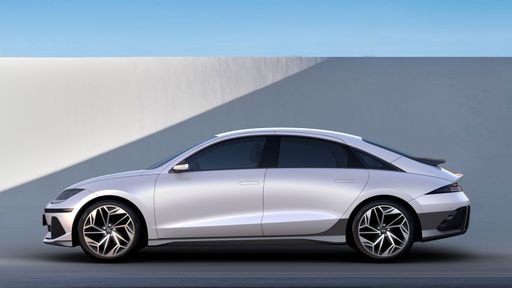 @ hyundai.news
@ hyundai.news
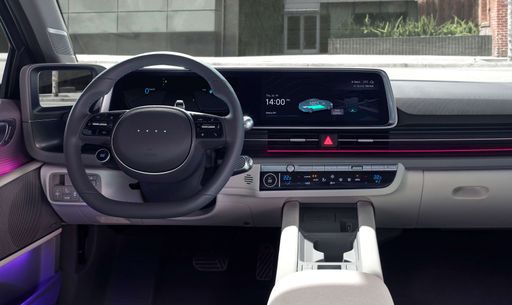 @ hyundai.news
@ hyundai.news
Tesla Model Y
The Tesla Model Y stands out in the electric vehicle market with its sleek design and impressive range. Its interior is minimalist yet stylish, offering a spacious cabin that enhances the driving experience. The Model Y also features advanced technology, including an intuitive infotainment system, making it a leader in innovative motoring.
details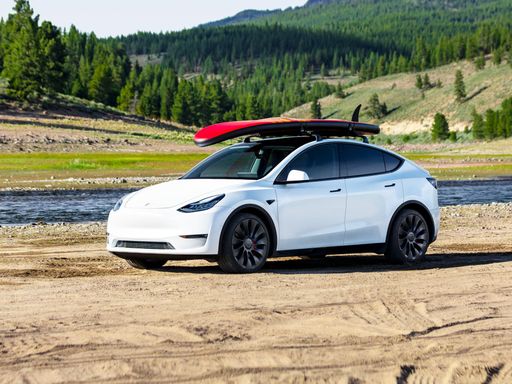 @ tesla.com
@ tesla.com
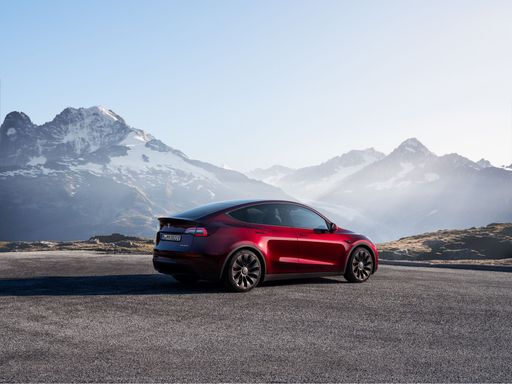 @ tesla.com
@ tesla.com
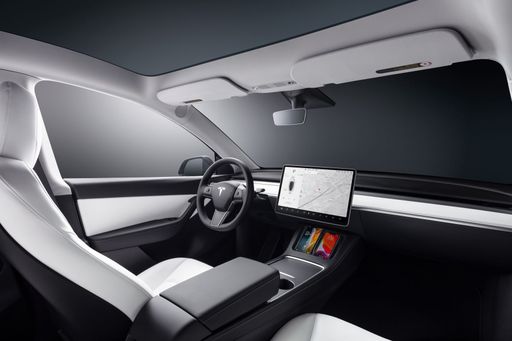 @ tesla.com
@ tesla.com
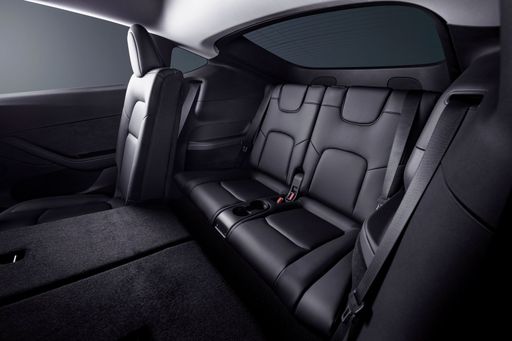 @ tesla.com
@ tesla.com

|

|
|
|
|
Costs and Consumption |
|
|---|---|
|
Price
37600 - 64300 £
|
Price
38600 - 53100 £
|
|
Consumption L/100km
-
|
Consumption L/100km
-
|
|
Consumption kWh/100km
13.9 - 15.1 kWh
|
Consumption kWh/100km
13.9 - 16.2 kWh
|
|
Electric Range
429 - 614 km
|
Electric Range
500 - 622 km
|
|
Battery Capacity
53 - 84 kWh
|
Battery Capacity
64.5 - 85 kWh
|
|
co2
0 g/km
|
co2
0 g/km
|
|
Fuel tank capacity
-
|
Fuel tank capacity
-
|
Dimensions and Body |
|
|---|---|
|
Body Type
Hatchback
|
Body Type
SUV
|
|
Seats
5
|
Seats
5
|
|
Doors
4
|
Doors
5
|
|
Curb weight
1850 - 2095 kg
|
Curb weight
1976 - 2108 kg
|
|
Trunk capacity
401 L
|
Trunk capacity
822 L
|
|
Length
4855 - 4935 mm
|
Length
4790 - 4796 mm
|
|
Width
1880 - 1940 mm
|
Width
1921 mm
|
|
Height
1495 mm
|
Height
1611 - 1624 mm
|
|
Max trunk capacity
-
|
Max trunk capacity
2022 L
|
|
Payload
425 - 430 kg
|
Payload
418 - 472 kg
|
Engine and Performance |
|
|---|---|
|
Engine Type
Electric
|
Engine Type
Electric
|
|
Transmission
Automatic
|
Transmission
Automatic
|
|
Transmission Detail
Reduction Gearbox
|
Transmission Detail
Reduction Gearbox
|
|
Drive Type
Rear-Wheel Drive, All-Wheel Drive
|
Drive Type
Rear-Wheel Drive, All-Wheel Drive
|
|
Power HP
151 - 650 HP
|
Power HP
299 - 627 HP
|
|
Acceleration 0-100km/h
3.2 - 8.8 s
|
Acceleration 0-100km/h
3.5 - 5.9 s
|
|
Max Speed
185 - 257 km/h
|
Max Speed
201 - 250 km/h
|
|
Torque
350 - 770 Nm
|
Torque
420 - 493 Nm
|
|
Number of Cylinders
-
|
Number of Cylinders
-
|
|
Power kW
111 - 478 kW
|
Power kW
220 - 461 kW
|
|
Engine capacity
-
|
Engine capacity
-
|
General |
|
|---|---|
|
Model Year
2022 - 2025
|
Model Year
2025
|
|
CO2 Efficiency Class
A
|
CO2 Efficiency Class
A
|
|
Brand
Hyundai
|
Brand
Tesla
|
What drive types are available for the Hyundai IONIQ 6?
Available configurations include Rear-Wheel Drive or All-Wheel Drive.
The prices and data displayed are estimates based on German list prices and may vary by country. This information is not legally binding.
